This article has been reviewed according to Science X's editorial process and policies. Editors have highlighted the following attributes while ensuring the content's credibility:
fact-checked
reputable news agency
proofread
Super Typhoon Saola sweeps towards southern China cities
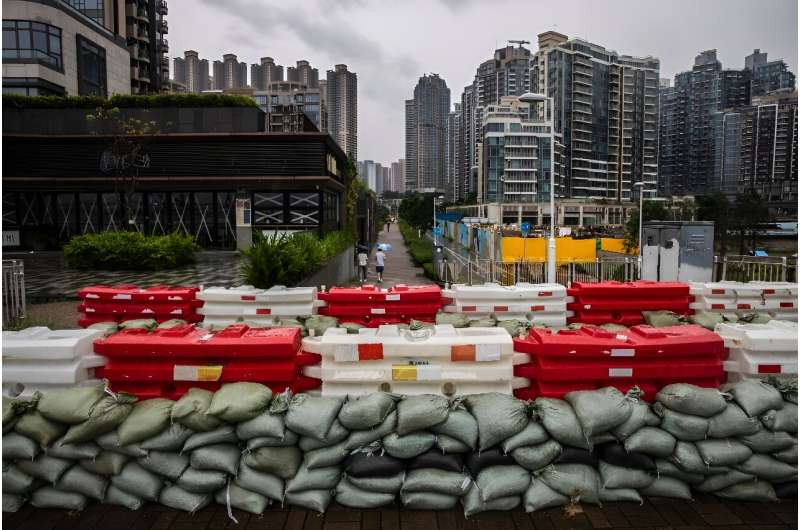
Tens of millions of people in Hong Kong, Shenzhen and other southern Chinese megacities sheltered indoors Friday as Super Typhoon Saola threatened to become the strongest storm to hit the region in decades.
Hundreds of flights were canceled across the region, the start of the school year was delayed in Hong Kong, and the rain-drenched finance hub's streets were deserted.
With a direct hit on Hong Kong possible, authorities warned they may raise the warning level to T10—the city's highest alert, which has only been issued 16 times since World War II.
China's national weather office said Friday that Saola "may become the strongest typhoon to make landfall in the Pearl River Delta since 1949", referring to a low-lying region that includes Hong Kong, Macau and Guangdong province—home to tech hub Shenzhen.
By 3 pm (0700 GMT), Saola was 140 kilometers (around 85 miles) east-southeast of Hong Kong, packing sustained winds of 210 km per hour.
Neighboring Shenzhen—home to 17.7 million people—opened shelters for people to take refuge, and planned to halt public transportation.
Trains in and out of Guangdong will also be suspended from 8 pm to 6 pm Saturday.
"It's going to affect our life," said Wu Wenlai, 43, who runs a restaurant in a Shenzhen suburb which he had to close.
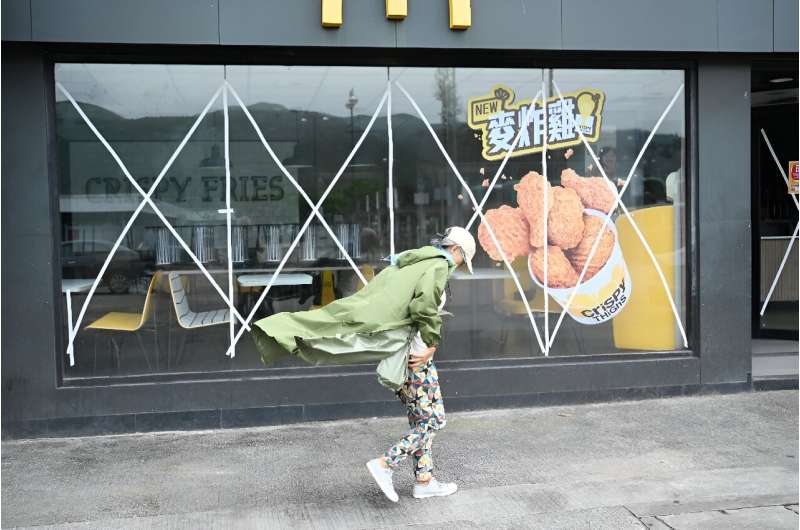
"My eldest son was planning to fly to Chengdu today for university and his flight has been canceled now," Wu added.
Despite government orders to stop businesses by late afternoon, trade was brisk at Shenzhen's wet markets.
"People are still rushing in to stock up on food last minute," said shop owner Lu Yiming.
Dozens of delivery drivers braved strong winds and rain to reach residents hunkering down indoors.
"I will work until I feel it's too dangerous," delivery driver Chai Jijie, 22, told AFP.
"People don't want to go out but want to stock up on snacks and other goods. There are lots of delivery orders."
Across the mainland border in Hong Kong, the stock market suspended trading, and authorities warned that Saola could skirt within 50 km of the territory from the night to the following morning, causing a storm surge that could lead to "serious flooding".
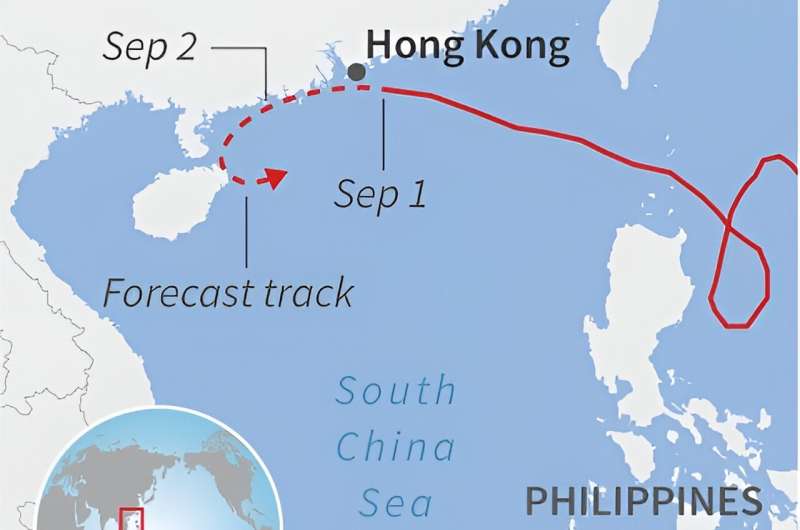
"The maximum sea level may be similar to that when Mangkhut hit Hong Kong in 2018," the city's weather observatory said.
That was the last time Hong Kong issued a T10 warning. Typhoon Mangkhut left more than 300 people injured in the city, shredding trees and unleashing floods.
In mainland China, it affected more than three million people in the southern provinces, killing six.
More intense typhoons
Southern China is frequently hit in summer and autumn by typhoons that form in the warm oceans east of the Philippines and then travel west.
Climate change has increased the intensity of tropical storms, with more rain and stronger gusts leading to flash floods and coastal damage, experts say.
In Hong Kong, businesses duct-taped glass displays and windows, while shoppers reported that frozen foods and vegetables in supermarkets were cleared out.
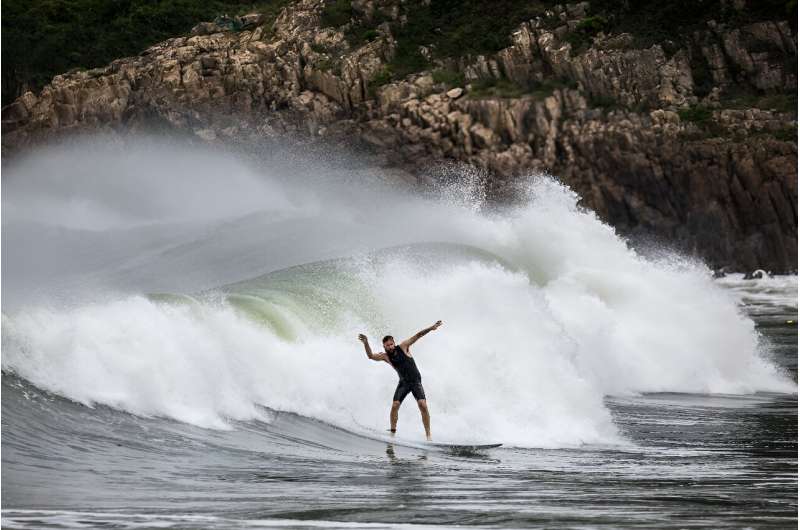
Surfers took advantage of the high winds and caught the huge waves generated by the coming typhoon at a Hong Kong beach.
In a low-lying fishing village in Lei Yue Mun district—which is prone to flooding—water levels rose and seeped into shops, prompting residents to set up sandbags and board up doors.
"I hope we can save the tools needed for our business, like the fridge. We elevated them so the water wouldn't damage the (electronics)," a restaurant operator surnamed Lee told a local TV station.
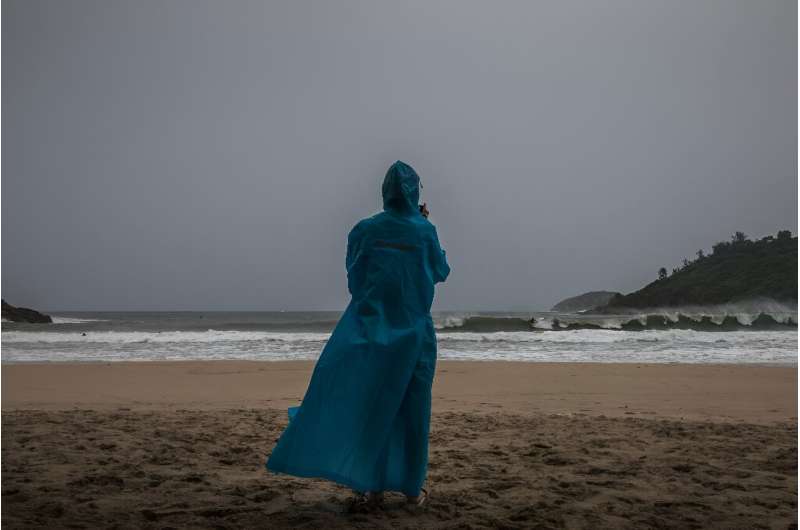
Hong Kong's airport authority said more than 300 flights were canceled Friday, though 600 were still scheduled.
Neighboring casino hub Macau also issued its third-highest typhoon warning by mid-afternoon.
Saola displaced thousands earlier this week as it passed the northern Philippines, but no direct casualties have been reported so far.
© 2023 AFP





















